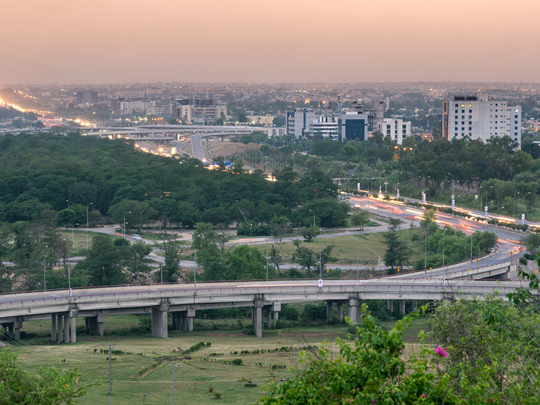
Pakistani realtors are keeping their fingers crossed as they wait for the impasse to end. Although hit by political turbulence in the wake of the Panama Papers, as well as tensions between the civil and military sectors, property insiders forecast a bullish trend next year in view of the upcoming China-Pakistan Economic Corridor (CPEC).
As interest centres around real estate in the South Asian country with the recent Pakistan Property Exhibition, GN Focus asked realtors to identify the markets to watch.
“I believe that China Pakistan Economic Corridor could be a game changer for the region,” Ayub Sabir Izhar, CEO of Izhar Monnoo Developers, told GN Focus. “At present, however, it is at an early stage. Lahore is the main market for many reasons. Due to large industrial base and being at the centre of CPEC development plans.”
Having seen progress from a small scale to a large real estate developer, he identified several other top-tier cities as worthy of investment, notably Islamabad, Karachi, Faisalabad and Multan, followed by Gwadar, where he says infrastructure is still being developed.
Following a merger between the Izhar and Mannoo Groups, the companies are promoting their Dream Gardens project in Lahore, which due to its success is now in its third phase.
Government support
As the sector grows, the government needs to step in to help solve the housing shortage, says Wasiq Naeem, Owner of Star Marketing. “The property sector in Pakistan is gaining momentum in terms of foreign investment and all we
need is more government support with direction-oriented policies to take this sector to new heights.”
The housing shortage is said to be over nine million units with demand growing at a rate of 0.7 million new units a year. By 2025 the shortfall is expected to reach 20 million residential units. However, purchasing power has reduced, says Naeem. “It is unfortunate to have our government is lagging behind in this important area. People are homeless, shelterless, but there is no refuge available.
“The private sector, however, is contributing to solve this crisis. We are also working in collaboration with Association of Builders and Developers to provide low-priced living units for public. Unless the government intervenes and supports, the shortage will increase. On the other side, soft loans by banks for the lower-middle class are difficult to get and not feasible.”
Recent property taxes have also affected business, he adds. “To improve this situation government can contribute to it by providing land and establishing new economic units,” he says.
Naeem says as CPEC takes shape and industrial zones are set up across Pakistan, new property markets will emerge. He named Islamabad as the most attractive market, followed by Lahore and Karachi. “Peshawar can be put at number four, followed by Faisalabad, the industrial city of Pakistan,” he says. “Gwadar needs time to develop [its] infrastructure but once developed it will be the number one property market.”
Star Marketing is behind projects such as Samama Star in Islamabad, Karachi’s City Towers in Karachi and COLAH in Faisalabad. The company also has representatives in the UAE and across the GCC, as well as in Canada, Denmark, the Netherlands, the US and UK.
Markets in demand
For Renaissance Group Chief Executive Ejaz Mahmood, Lahore is and will remain the country’s top property market as the city has potential to grow further and attract foreign investors. “CPEC has increased the importance of Lahore as China and Pakistan can export their goods to India’s 1.25 billion population by making warehouses in Lahore.
“These economical units will strengthen the property markets as well.” All 5,000 units of the group’s Lahore Motorway City Project, launched in 2014, have been sold.
Mahmood expects the sector’s “current state of limbo” to end after a new government is formed. He views Gwadar as the second most attractive market, followed by Islamabad and Faisalabad. He’s also not in favour of satellite towns outside cities such as Karachi, from where people have to travel daily around 50-60km to get to their workplaces.
Pakistan, with a population of 200 million people and stable economic growth, has huge potential in the real estate business. With the materialisation of CPEC, the country’s economy could grow at rapid pace.







